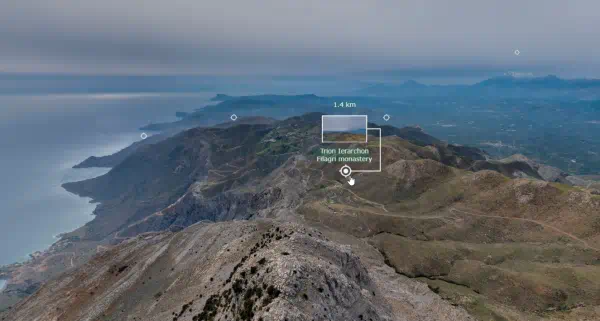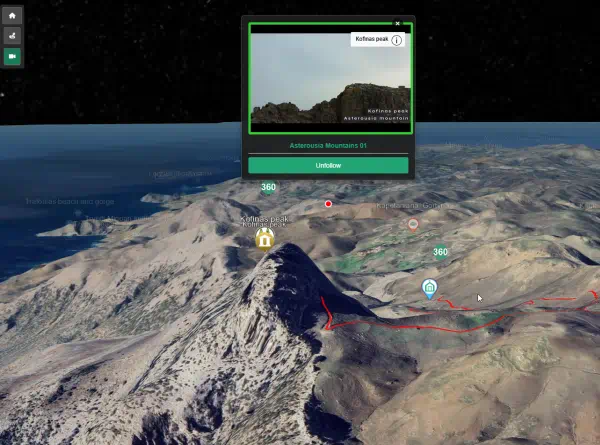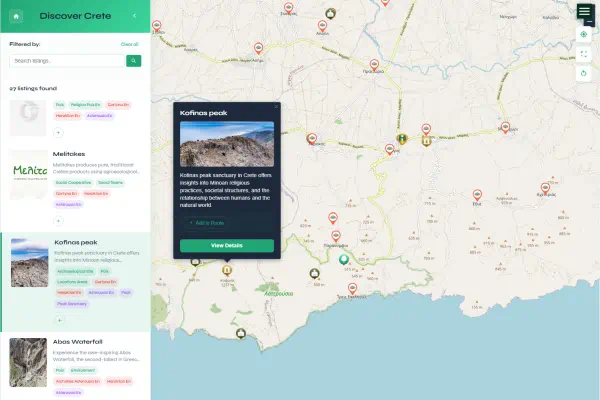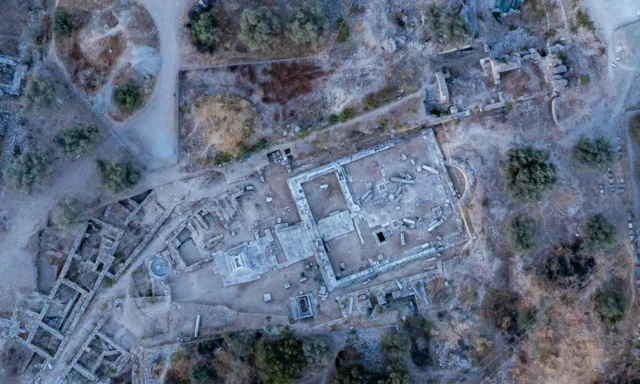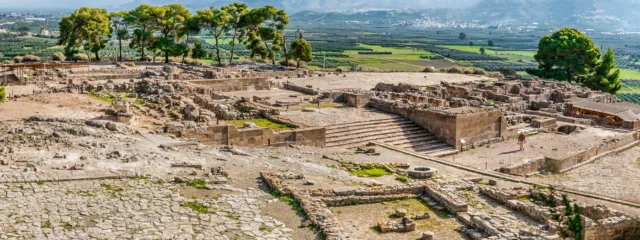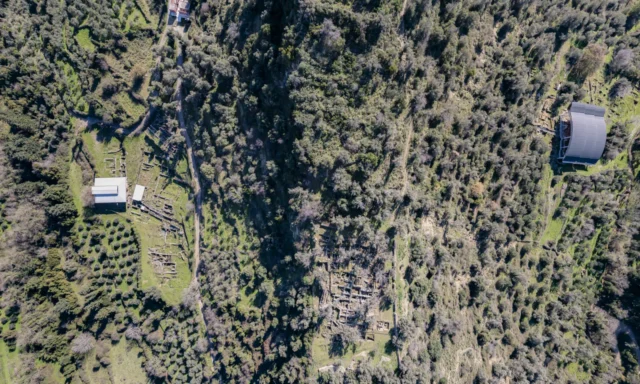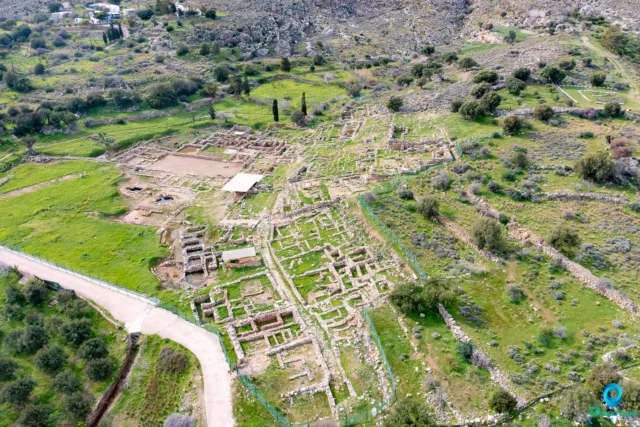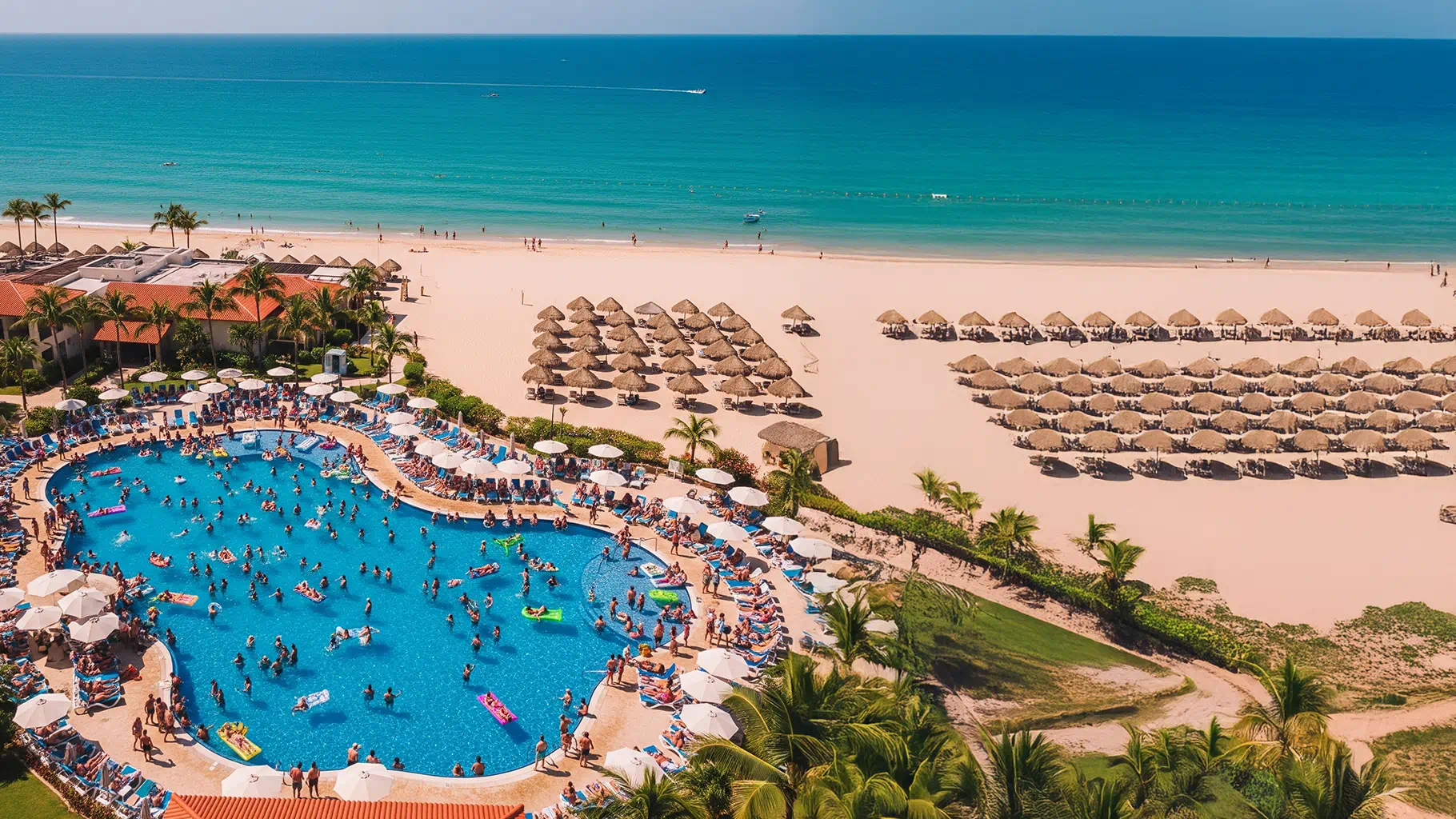The island of Crete, a crucible of European civilization, presents a landscape rich with the material and immaterial legacies of its past. From the monumental ruins of Minoan palaces to the vibrant, living traditions of its music, cuisine, and festivals, Cretan heritage constitutes a cultural resource of global significance. However, this heritage is not merely a passive inheritance; it is an active component of the island’s modern economy, inextricably linked to a mass tourism industry that has become both its primary patron and its most formidable threat.
While the commodification of cultural heritage is often presented as a necessary tool for preservation and economic development, its current implementation in Crete is largely driven by a profit-first logic that adapts cultural expressions to market demands. This process risks a gradual ‘hollowing out’ of authentic cultural meaning, disenfranchising local communities, and ultimately transforming heritage from a living identity into a sterile consumer product.
The complex interplay of pragmatic necessity, economic opportunity, and profound cultural risk must be acknowledged. Without the revenue generated by millions of annual visitors, it is undeniable that many of Crete’s most cherished monuments would be in a far worse state of preservation, and its rural economies would be significantly more precarious. The argument for commodification is not one of mere greed, but one of survival, making it a powerful and compelling force.
First, we will examine the pragmatic imperatives that render it a seeming necessity for the island by checking the lifelines that tourism provides for archaeological sites, rural communities, and intangible traditions. Then we will deconstruct this pragmatic case by exposing the significant negative consequences of the current model. We will investigate the loss of authenticity, the economic disenfranchisement of local communities, the trivialization of sacred and symbolic meaning, and the paradox of marketing “unspoiled” destinations. Finally, we will synthesize these findings to deliver a nuanced judgment on the true cost of Crete’s tourism model.
The Pragmatic Imperative: Why Cretan Heritage is for Sale
To critically assess the current model of heritage commodification in Crete, one must first rigorously and fairly examine the powerful forces of necessity that underpin it. The commercialization of culture is not merely a choice but is often framed as an unavoidable imperative for economic survival and cultural continuity in the 21st century.
Funding the Past: The Economic Lifeline for Monuments and Museums
The most potent argument for the commodification of heritage is economic: tangible history requires constant and substantial financial investment for its preservation, research, and presentation. In an economy like Greece’s, which has faced significant fiscal pressures, the revenue generated directly from tourism is not merely supplementary but foundational to the survival of its most iconic sites.
The archaeological site of Knossos serves as the preeminent example of this dynamic. In 2023, the palace generated an astonishing €11 million in revenue from ticket sales alone, with some estimates placing its annual potential as high as €15 million. This figure positions Knossos not just as a cultural treasure but as a veritable “gold mine” for the state. When combined with other major sites and museums, such as the Heraklion Archaeological Museum which saw a visitor increase of nearly 140% in a single month post-pandemic, the total revenue from Cretan heritage sites exceeded €18.5 million in 2023.
This substantial income stream is not arbitrary. It is institutionalized through the Hellenic Organization of Cultural Resources Development (H.O.C.RE.D.) www.tap.gr, the public body responsible for managing the revenue from Greece’s cultural assets. Formerly known as the Archaeological Receipts and Expropriations Fund (TAPA), this organization channels the proceeds from ticket sales, museum shop purchases, and catalogue sales directly back into the heritage sector. These funds are earmarked for critical activities that the state budget alone cannot sufficiently cover: the expropriation of private land for new excavations, the ongoing conservation and restoration of monuments, the enhancement of visitor facilities, and the construction and maintenance of museums. The museum shops themselves are explicitly marketed as a means for visitors to directly support the work of the archaeological service.
This self-generated revenue operates within a mixed-funding model that also includes national and European Union investment. For instance, the EU’s Operational Programme “Crete” for 2014-2020 allocated a portion of its €434.8 million budget to the “enhancement of monuments” and “upgrading of museums,” while the National Strategic Reference Framework (NSRF) also known as ESPA in Greece, supports the development of cultural infrastructure. However, the direct, liquid, and substantial income from tourism provides a level of financial autonomy and reliability that is crucial for day-to-day operations and long-term projects.
This financial architecture creates a powerful, self-justifying cycle. The preservation of world-class sites like Knossos and Phaistos demands a consistent and massive flow of capital. Given the fiscal constraints on the Greek state, this capital must be largely self-generated. The most efficient way to generate it is by leveraging the sites’ primary asset: their appeal to tourists. Therefore, maximizing tourist arrivals and optimizing revenue collection becomes a core objective of heritage management itself. The argument becomes a pragmatic loop: heritage must be packaged and sold as a tourist product to generate the funds required for its own protection. From this perspective, the commodification of the past is not a cynical choice but an economic and logistical necessity. The question posed by heritage managers is not whether to sell access, but how they could possibly afford not to, when over a million visitors a year provide the lifeblood for preservation.
Note: Visitor and revenue figures are based on reported data and estimates from sources. The model is a mixed-funding one, making precise percentage calculations difficult, but the scale of ticket revenue clearly indicates a high degree of dependency.
From the Village to the Global Market: Empowering Rural Economies
Beyond the monumental sites, commodification provides a crucial economic engine for Crete’s rural heartland. By transforming traditional agricultural products and ways of life into marketable goods, tourism offers a powerful incentive for the preservation of cultural landscapes and provides a vital income stream that allows communities to persist in their ancestral villages.
A key mechanism for this is the European Union’s system of geographical indications, specifically Protected Designation of Origin (PDO) and Protected Geographical Indication (PGI). Crete has a wealth of products under these labels, most notably its olive oils (from regions like Sitia, Peza, Kolymvari, and Viannos) and wines. These legally protected designations certify that a product’s unique qualities are intrinsically linked to its specific geographical origin and traditional production methods. This system is a powerful economic tool. It allows small-scale Cretan producers to compete on a global stage based on quality and authenticity rather than sheer volume. PDO/PGI products can command significantly higher prices—on average, 2.11 times more than comparable non-certified products—directly boosting farm incomes. This premium provides a direct financial incentive to maintain traditional cultivation practices, preserve local olive and grape varietals, and protect the biodiversity of the agricultural landscape.
Agritourism represents another vital link between heritage and economic viability. It is explicitly conceived as a strategy to diversify farm income, encourage the younger generation to remain in agriculture, and ultimately, allow families to sustain their lives in the countryside. Across Crete, in villages from Archanes to the Lasithi Plateau, agritourism initiatives are flourishing. These range from olive oil tastings and cheese-making workshops to immersive farm stays and participation in the grape or olive harvest. This creates a symbiotic relationship where tourism provides a market for the authentic experiences of rural life, and agriculture provides the authentic product that tourists seek. This synergy is critical in an economy where agriculture and tourism collectively account for over half of the island’s GDP. For many Cretans, this manifests as “pluriactivity”- a seasonal rhythm of working in tourism during the summer peak and returning to agricultural work on the family land during the winter. This model provides a resilient economic foundation that prevents a complete abandonment of traditional livelihoods in favor of a tourism monoculture.
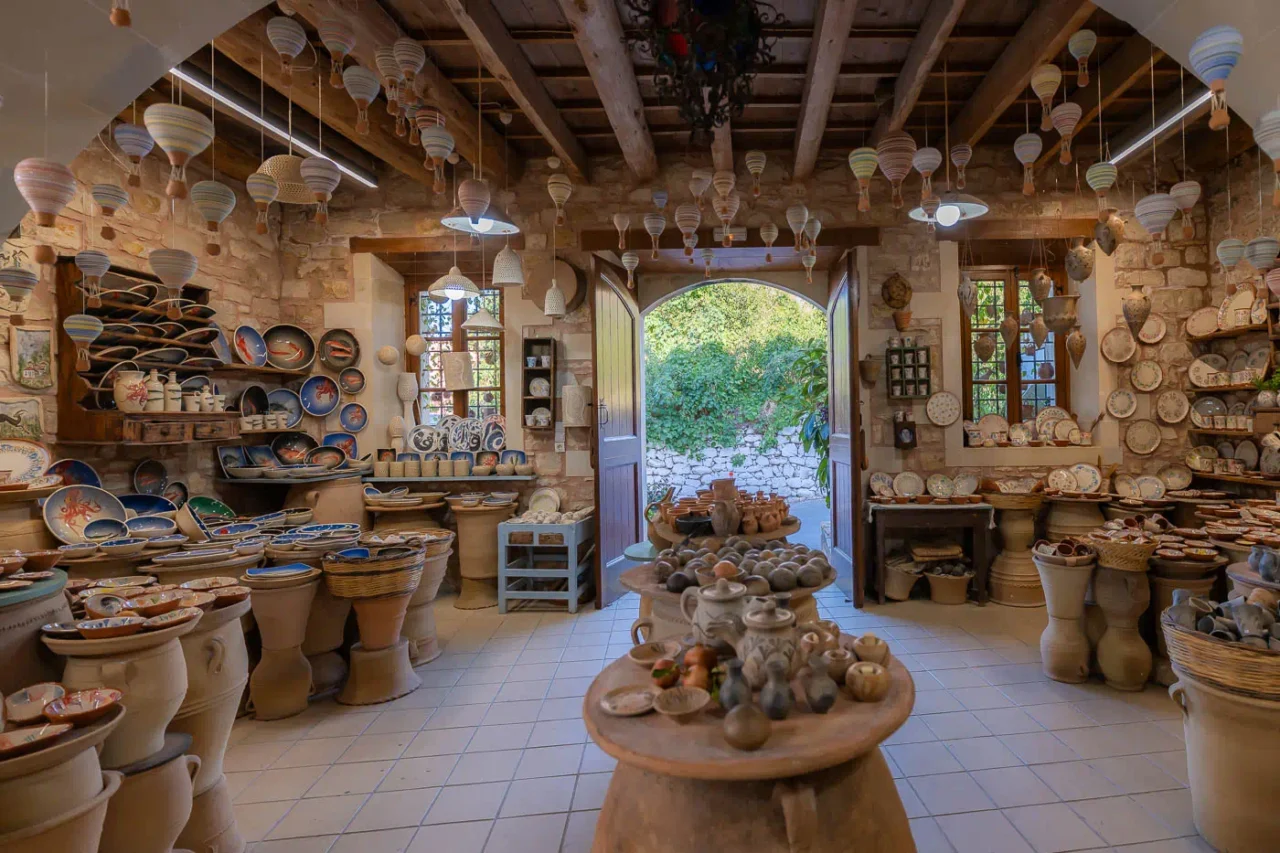
This dynamic extends to traditional artisanship. Crafts such as pottery in the village of Margarites, the making of traditional Cretan knives (basalis) in Chania, and intricate wood carving have found a new and essential market in tourism. While the local demand for these items for everyday use has declined with modernization, sales to visitors provide a viable income for artisans, ensuring these valuable skills are not lost. Women’s cooperatives, in particular, have become important hubs for preserving and marketing traditional weaving and embroidery, creating economic opportunities while safeguarding a cornerstone of domestic cultural heritage.
The Performer’s Paycheck: Tourism as a Patron of Intangible Heritage
The economic logic of commodification extends beyond tangible goods and sites to the realm of intangible cultural heritage. For traditions like music, dance, and festivals, the interest and financial input from tourism can mean the difference between fading into obscurity and thriving as a living, breathing practice.
The vibrant tradition of Cretan music—centered on the iconic sounds of the lyra and laouto—and its accompanying dances like the pentozali and syrtos have found a powerful patron in the tourism industry. The constant demand for entertainment at local tavernas, hotels, and specially organized “Cretan Nights” creates a professional stage for performers. This provides a reliable income stream, transforming what might have been a part-time passion into a viable career path for musicians and dancers. This professionalization not only ensures the preservation of the art forms but also enhances their visibility and appeal to younger generations of Cretans, who can now see a future in mastering and continuing these traditions.
Similarly, tourism has had a profound impact on the panigiria, the traditional village festivals that are a cornerstone of Cretan social life. These festivals, typically held to honor a village’s patron saint or celebrate a local harvest, have become major attractions for visitors seeking an authentic cultural experience. This influx of interest and participants has led to greater investment, more sophisticated organization, and wider promotion, ensuring the festivals’ continuation and even expansion. While some purists may decry the commercial aspects that have emerged—such as a symbolic entrance fee of €10-15 at some events—proponents argue this is a pragmatic adaptation. The revenue generated helps to cover the substantial costs of hiring live bands, preparing food for hundreds or thousands of attendees, and managing the logistics of a large-scale event, thereby securing the panigiri‘s future in a modern economic context. In this view, tourism does not destroy the festival; it provides the financial means for it to flourish.
The Hollowing Out: A Critical Analysis of Heritage Commodification
Although the practical arguments for commodification are persuasive, they are not sound. Applying market principles to culture has considerable risks. We will examine the tangible and intangible costs of Crete’s current tourism model beyond the justifications of economic need. The profit-focused approach is causing a loss of cultural meaning; heritage forms are preserved and sold, but their authenticity is reduced. This process is evident in the simplification of performances for tourists, the decline of craft quality, significant economic loss that disadvantages communities, the trivialization of sacred symbols, and the inherent problem of marketing authenticity.
Authenticity on Stage: From Village Square to Resort Buffet
The most immediate and visible evidence of cultural erosion can be found in the adaptation of intangible heritage for tourist consumption. A stark contrast exists between an organic cultural event and its staged, commodified counterpart, perfectly illustrated by comparing a traditional Cretan panigiri with a resort-hosted “Cretan Night.”
An authentic panigiri is a deeply embedded community ritual. It is tied to a specific place—a village square, a churchyard—and a specific time or occasion, such as a patron saint’s day or the end of a harvest. Its purpose is primarily social and religious: a reaffirmation of community bonds, an expression of collective identity, and a moment of shared celebration. These events are characterized by their spontaneous, organic nature and can last all night. Crucially, the distinction between performer and audience is fluid; everyone is a participant, joining in the circle dances and sharing food and drink in a collective experience.
The “Cretan Night,” by contrast, is a tourism product. It is a packaged, time-constrained performance, typically lasting a few hours, designed for efficient consumption. The setting is often a generic tavern or a hotel buffet, detached from any specific community context. The event follows a predictable script: a fixed menu, a professionalized show for a passive audience, and often the inclusion of pan-Hellenic clichés like plate-breaking to satisfy tourist expectations of a “real Greek night”. The primary purpose is not community cohesion but commercial entertainment.
What is lost in this translation from ritual to product is profound. The staged version meticulously extracts the form of the culture—the melodies of the lyra, the steps of the pentozali, the design of the costumes—but strips it of its authentic function and meaning. The music is no longer an expression of a specific village’s joy or sorrow; it is a soundtrack for dinner. The dance is no longer a spontaneous act of communal participation; it is a choreographed spectacle for observation. This process transforms a living, breathing cultural practice into a sterile, repeatable, and ultimately hollow consumer good. While many tourist reviews praise the “authenticity” of these nights, it is a carefully curated and staged authenticity, designed to be easily digestible for an external audience, not a genuine reflection of Cretan life.
The Souvenir-Industrial Complex: Mass Production and the Erosion of Craft
The hollowing out of heritage is equally apparent in the realm of tangible goods. The souvenir shops that line the picturesque streets of Chania and Rethymno’s old towns are ground zero for the battle between authentic craft and mass-produced kitsch—a battle that authentic craftsmanship is largely losing.
Crete possesses a deep and storied tradition of handicrafts, from the functional elegance of its leather boots (stivania) and the iconic pottery of villages like Margarites to the intricate weaving of its textiles and the symbolic weight of its knives. Yet, a survey of the wares on offer in most tourist-facing shops reveals a different reality. The market is saturated with mass-produced souvenirs, many of which are imported from countries with lower labor costs. These items—generic ceramic pots with poorly applied “Minoan” motifs, low-quality leather goods, and an endless array of trinkets—bear little or no connection to the island’s actual craft traditions.
This influx of cheap imitations creates a destructive economic and cultural dynamic. As local artisans like the potter Yiannis from the Arts and Crafts village near Chania attest, the market has become “greedy”. Intermediary shop owners, focused on maximizing profit margins, often either mark up genuine local crafts to prohibitive prices or fill their shelves with low-cost imports. Tourists, unable or unwilling to distinguish between the authentic and the fake, or put off by the high price of genuine articles, frequently opt for the cheaper, mass-produced souvenir. This behavior, as Yiannis laments, “will end up killing local crafts”. Each sale of an imported refrigerator magnet over a hand-thrown pot represents a small but significant blow to the viability of traditional skills. It devalues the perception of Cretan artisanship, reducing it in the consumer’s mind to the level of the cheap knock-offs that dominate the market.
The challenges for genuine artisans are immense and systemic. They include a lack of access to capital and funding, a policy framework that does little to protect them from the competition of imported goods, and a lack of meaningful inclusion in the tourism planning process, which prioritizes volume over quality. The result is a market that actively undermines the very traditions it purports to celebrate.
The Paradox of the All-Inclusive: Economic Leakage and Community Disenfranchisement
Nowhere is the profit-first logic of Cretan tourism more apparent, or its negative consequences more concentrated, than in the all-inclusive resort model that dominates the island’s northern coastline. These resorts, while offering convenience for the tourist, create a “resort bubble” that systematically isolates visitors from the local economy and community, leading to severe economic leakage and social marginalization.
The fundamental model of the all-inclusive resort is one of economic enclosure. By providing for every conceivable need of the guest—accommodation, food, drink, entertainment, and even on-site shopping – the resort captures nearly 100% of that tourist’s on-island spending. This creates a formidable barrier for local businesses. The family-owned taverna, the independent artisan’s workshop, the local tour guide, and the neighborhood market—the very enterprises that form the backbone of a healthy, diversified local economy – are effectively shut out, unable to compete with the pre-paid convenience of the resort.
The scale of this economic leakage is staggering. A key study on Cretan tourism revealed that a full 42% of a foreign tourist’s total holiday expenditure is paid directly to foreign tour operators for the flight and accommodation package before they even set foot on the island. This represents a massive, upfront loss of revenue that never enters the Cretan economy. Of the remaining 58% spent on the island, the vast majority is captured by the resorts themselves. Given that many of these large hotel chains are foreign-owned, a significant portion of these profits are then repatriated, rather than being reinvested in the local community.
This system fosters a deeply inequitable, two-tiered economy. At the top are the large, often international, corporations that control the high-volume package tour market and reap the lion’s share of the profits. Far below is a second tier of small, local businesses that are left to compete for the scraps of spending from the minority of tourists who venture outside the resort walls. This model actively stifles local entrepreneurship and creates a state of economic dependency, rather than fostering broad-based, resilient community development. While some resorts have begun to offer curated “authentic experiences” or highlight their use of local products, these are often superficial marketing gestures that do not alter the fundamentally extractive nature of the all-inclusive model. The local community is not a partner in this model; it is, at best, a peripheral supplier and, at worst, merely part of the scenery.
From Sacred Symbol to Refrigerator Magnet: The Trivialization of Cultural Icons
The commercial logic of tourism extends its reach to the most sacred and historically significant elements of Cretan heritage, often decontextualizing and trivializing them in the process of turning them into consumable products.
The symbols of the Minoan civilization are a case in point. Icons such as the Malia Bee pendant, a masterpiece of gold granulation representing fertility and community; the Phaistos Disk, an enigmatic artifact holding the secrets of an undeciphered script; the Labrys or double-axe, a potent religious symbol; and the Horns of Consecration that once adorned palace altars, all carry immense historical and cultural weight. Today, these profound symbols have been stripped of their context and are endlessly reproduced on a vast array of mass-market souvenirs. They appear as designs on t-shirts, as cheap metal pendants, as enamel pins, and as refrigerator magnets, sold in every tourist shop and online marketplace. This ubiquitous and superficial reproduction risks a profound devaluation of their meaning. A symbol that once connected a civilization to its gods is reduced to a mere decorative motif, its sacredness and mystery flattened into a simple commodity.
A similar tension between the sacred and the profane is evident in the management of Crete’s living religious sites. Historic monasteries such as the Arkadi Monastery, a national symbol of resistance, and the Toplou Monastery in the east are not only active centers of Orthodox worship but also major tourist attractions. To manage the influx of visitors, these monasteries now operate on a commercial footing, charging entrance fees and running on-site museums and gift shops. The conversion of the old wine cellar at Arkadi into a souvenir shop is a potent example of this functional and symbolic shift. While this generates necessary revenue for the upkeep of the historic buildings, it creates an inherent conflict. The need to process tourists, sell merchandise, and manage visitor flows can easily overshadow the monastery’s primary role as a space for quiet prayer and spiritual contemplation, transforming a site of pilgrimage into just another stop on the tourist trail.
Marketing Authenticity to Death: The Unspoiled Village as a Consumable Product
The final and perhaps most insidious aspect of heritage commodification is the “authenticity paradox,” wherein the very act of marketing a place as “authentic” or “unspoiled” sets in motion the forces that will ultimately undermine that authenticity. This process is clearly visible in Crete’s more remote regions, which are now being packaged and sold as the antidote to the mass tourism of the northern coast.
The mountainous region of Sfakia is a prime example. It is marketed to tourists on the basis of its wild, rugged landscape, its fiercely independent people, and its inaccessibility, with many areas still lacking road access. This “uncharted” quality is its unique selling proposition. Yet, tourism is now the dominant economic driver in its coastal villages, particularly in Aghia Roumeli, the village at the exit of the Samaria Gorge. The daily influx of up to 800 hikers who pass through the village represents a form of transient mass tourism in what is supposed to be an isolated outpost. This economic reliance on tourism creates inevitable pressure for further development—calls for better roads, more tourist facilities—that would fundamentally erode the very isolation and “authenticity” that attracts visitors in the first place.
A similar dynamic is unfolding on the Lasithi Plateau, which is promoted as a timeless landscape of traditional villages and iconic windmills. This marketing has successfully integrated the plateau into the island’s tourism circuit, making it a popular destination for day-trippers. As a result, tourism is increasingly shaping the local economy, creating a new dynamic alongside traditional agriculture and gradually altering the socio-economic fabric of the villages.
This paradox reveals a deeper truth about the island’s development model. The phenomenon of “overtourism,” now widely documented in Crete, is not an accident or an unforeseen side effect; it is the logical and inevitable outcome of a system that relentlessly prioritizes growth in visitor numbers and revenue above all else. The documented consequences of this model—severe environmental degradation such as water shortages and coastal pollution, social disruption like the housing crisis in Chania caused by short-term rentals, and the overwhelming strain on public infrastructure—are the tangible costs of the “hollowing out” process. The seemingly disparate issues of staged authenticity, economic leakage, and the erosion of craft are not separate problems. They are all interconnected symptoms of a single, underlying pathology: a development model predicated on a form of growth that is, by its very nature, culturally and environmentally unsustainable.
Heritage as Collateral Damage: The Papoura Hill Dilemma
The abstract critiques of commodification find their most urgent and concrete expression in the ongoing controversy at Papoura Hill, near Kasteli. Here, the conflict is not one of gradual erosion but of immediate, existential threat, pitting a monumental infrastructure project designed to fuel mass tourism against the preservation of a newly discovered and globally significant archaeological site. The case serves as a stark, real-time illustration of a development model where unique cultural heritage is treated as an obstacle to be managed, rather than a treasure to be protected at all costs.
In 2024, during construction work for the new Kasteli International Airport—a project intended to dramatically increase Crete’s tourist capacity—archaeologists unearthed a monumental circular structure dating back 4,000 years to the Minoan period. The Greek Ministry of Culture immediately hailed it as a “unique” and “extremely interesting” find, with an architectural design that has no known parallel in Minoan archaeology. Its scale and complexity suggest it was a major communal or ritual center, with some archaeologists suggesting that, once fully studied, it could qualify for the UNESCO World Heritage list and be considered one of the world’s most important monuments.
The monument’s location, however, placed it directly in the path of a planned radar installation essential for the new airport’s operation. After initial public assurances that an alternative location would be found to protect the site, the government reversed its position in mid-2025. The new, official proposal involves placing the radar facilities a mere 20 to 30 meters from the monument’s outer ring. This proposed “balance” has been met with fierce opposition from the scientific community, which argues that the solution will cause irreversible harm. The necessary construction work, including extensive excavations and potential use of explosives, threatens the physical integrity of the 4,000-year-old structure, while the permanent presence of a large industrial installation would shatter the archaeological landscape and cripple any future efforts to properly develop the site for visitors.
The official narrative attempting to justify this compromise has further eroded trust. The Minister of Culture’s claim that a modern radar and the Minoan monument served “corresponding uses” has been dismissed by archaeologists as a scientifically unsubstantiated and misleading analogy designed to reframe a spatial conflict as a story of national continuity. This case starkly demonstrates the prioritization of economic interests tied to mass tourism over the preservation of non-renewable cultural assets. The insistence on a technically convenient solution for the airport contractor, at the expense of a monument of potential global significance, reveals a value system where heritage is ultimately expendable when it conflicts with large-scale development.
The Papoura Hill dilemma is a microcosm of the struggle between two competing paradigms: one that sees heritage as a living identity and a source of community-based value, and another that views it as a subordinate element within a larger economic machine geared towards mass consumption. The potential destruction of the Papoura monument for an airport radar is the ultimate expression of the “hollowing out” process—a final, physical sacrifice of the authentic past to serve a commodified future.
Synthesis and Reimagining the Future of Cretan Heritage
Weighing the Scales: A Final Verdict
The pragmatic arguments for the commodification of Cretan heritage are undeniably powerful and rooted in on-the-ground reality. Revenue from tourism does, in fact, provide a critical financial lifeline for the preservation of archaeological monuments like Knossos, which might otherwise fall into neglect. The commercialization of agricultural products through PDO labels and the growth of agritourism do provide vital economic support to rural communities, helping to sustain traditional livelihoods. Similarly, tourist demand creates a stage and an income for performers of intangible arts, contributing to their continuity. To deny these benefits would be to ignore the difficult economic realities facing Crete and Greece.
However, the current implementation of this commodification, driven by a relentless, profit-first logic, is causing a significant and accelerating “hollowing out” of cultural meaning. The benefits of the current model are often highly concentrated, flowing primarily to large, often foreign-owned, tour operators and resort chains, while the profound cultural, social, and environmental costs are widely distributed among the local population and the landscape itself.
The true cost of this model is not merely the loss of an abstract or romanticized “authenticity.” It is the tangible degradation of the island’s carrying capacity. It is the water shortages exacerbated by the demands of coastal resorts, the housing crises in historic towns driven by unregulated short-term rentals, the replacement of local businesses with generic tourist shops, and the transformation of sacred symbols into meaningless trinkets. The current trajectory, if left unchecked, is not sustainable. It risks eroding the very cultural uniqueness and environmental beauty that make Crete a desirable destination in the first place, creating a classic case of tourism killing the thing it loves. The hollow labyrinth of the current model leads not to sustainable prosperity, but to a dead end.
A New Path Forward: The Imperative of Community-Led Stewardship
There is no simple or naive solution to the complex challenges facing Cretan heritage. The path forward does not lie in a single new policy, but in a fundamental shift in the decision-making paradigm—a move away from the current top-down, profit-driven model toward one of genuine Community-Led Stewardship. The ongoing dilemma at Papoura Hill serves as the ultimate cautionary tale. The decision to prioritize an airport radar installation over the preservation of a unique Minoan monument, disregarding the unified opposition of the scientific community and local stakeholders, is a stark demonstration of a system where local voices are treated as secondary to the perceived imperatives of mass tourism infrastructure.
Any viable alternative must be built on the principle that local communities are not merely stakeholders to be managed, but are the primary guardians of their own heritage. This requires embedding the concepts of Prior Informed Consent (PIC) and Benefit Sharing (BS) into the core of all development. PIC means empowering communities with the genuine authority to approve or reject projects that impact their cultural and natural landscapes, ensuring they are active partners from the outset, not objectors after the fact. Benefit Sharing ensures that when heritage is commercialized, the economic returns are channeled back into the community in a transparent and equitable manner, fostering resilience rather than dependency.
Protecting this community stake requires new and creative thinking. As scholars like Farah and Tremolada have argued, conventional laws like copyright and trademark (Intellectual Property Rights) are ill-suited to protect collective, living traditions that belong to everyone and no one. While not a panacea, exploring custom-made legal tools could offer a way to safeguard community heritage. The existing ‘Protected Designation of Origin’ (PDO) framework for products like Cretan olive oil provides a powerful example. It protects the collective reputation and economic value of a regional product, ensuring benefits flow back to local producers. Applying this logic to intangible heritage—such as a community-managed “Cretan Music” or “Panigiri” designation—is a potential avenue worth exploring, not as a complete solution, but as a tool to empower communities.
Ultimately, the most valuable blueprint for the future may not be a specific policy, but a new process. The successful inscription of the Minoan Palatial Centres on the UNESCO World Heritage List was a landmark achievement, not just for the outcome, but for the collaborative method it required. The creation of the nomination dossier was a monumental effort involving the Greek Ministry of Culture, the Region of Crete, local archaeological services, and academic institutions, resulting in a shared, long-term management plan. This collaborative, multi-stakeholder model, which balances preservation with sustainable use, offers the most promising framework for reimagining heritage management across the island.
By adopting this spirit of genuine partnership, Crete can begin to navigate its way out of the hollow labyrinth. The choice is between continuing on a path that treats heritage as an expendable commodity in service of an unsustainable tourism model, or embracing the more challenging but ultimately more rewarding path of empowering communities to protect and share their living culture on their own terms.
Related material and sources
Academic Works & Journals
- Farah, P. D., & Tremolada, R. (2014). “Desirability of Commodification of Intangible Cultural Heritage: The Unsatisfying Role of Intellectual Property Rights.” Transnational Dispute Management, 11(2). Available at: https://www.transnational-dispute-management.com/article.asp?key=2096
- Andriotis, K. (2002). “Tourism in Crete: A Form of Modernisation.” Current Issues in Tourism. https://www.researchgate.net/publication/249024156_Tourism_in_Crete_A_Form_of_Modernisation
- Vourdoubas, I. (2024). “The Undesired Impacts of Overtourism in the Island of Crete, Greece.” https://www.researchgate.net/publication/385003944_The_Undesired_Impacts_of_Overtourism_in_the_Island_of_Crete_Greece
- Vourdoubas, I. (2022). “An Appraisal of Over-tourism on the Island of Crete, Greece.” https://www.researchgate.net/publication/362814142_An_Appraisal_of_Over-tourism_on_the_Island_of_Crete_Greece
- Vourdoubas, J. (2020). “The Nexus Between Agriculture and Tourism in the Island of Crete, Greece.” Journal of Agricultural Science and Technology. https://ideas.repec.org/a/mth/jas888/v8y2020i2p393-406.html
- Kousis, P. (2022). “Agritourism in Crete: a cultural approach. Representation and preservation of the island’s cultural heritage by the local providers.” Erasmus University Thesis Repository. Available at: https://thesis.eur.nl/pub/60967/
Official Reports & Data
- UNESCO World Heritage Centre. “Minoan Palatial Centres.” https://whc.unesco.org/en/list/1733/
- Hellenic Ministry of Culture. Official Portal. https://www.gov.gr/en/upourgeia/upourgeio-politismou-kai-athletismou
- Hellenic Statistical Authority (ΕΛΣΤΑΤ). “Movement of visitors in Museums and Archaeological Sites.” https://www.statistics.gr/documents/20181/5f421294-e00f-da04-f89b-bb354fc2b20d
- Operational Programme “Crete” 2014-2020 (ΕΣΠΑ). https://2014-2020.espa.gr/el/Pages/staticOPCrete.aspx
Articles & News Sources
- Geotour.gr. “The Monument of Papoura Hill: Valuing Heritage in the Shadow of the Kasteli Airport.” https://www.geotour.gr/the-monument-of-papoura-hill-valuing-heritage-in-the-shadow-of-the-kasteli-airport/
- Zarpa News. “‘Χρυσωρυχείο’ η Κνωσός το 2023 με έσοδα 11 εκατ. ευρώ! Ξεπέρασε τις εισπράξεις του 2019.” [“‘Goldmine’ Knossos in 2023 with €11 million in revenue! It surpassed the collections of 2019”]. https://www.zarpanews.gr/quot-chrysorycheio-quot-i-knosos-to-2023-me-esoda-11-ekat-eyro-xeperase-tis-eispraxeis-toy-2019/
- Greece Is. “Minoan Palaces of Crete Join UNESCO’s World Heritage List.” https://www.greece-is.com/news/crete-minoan-palaces-unesco-heritage/

